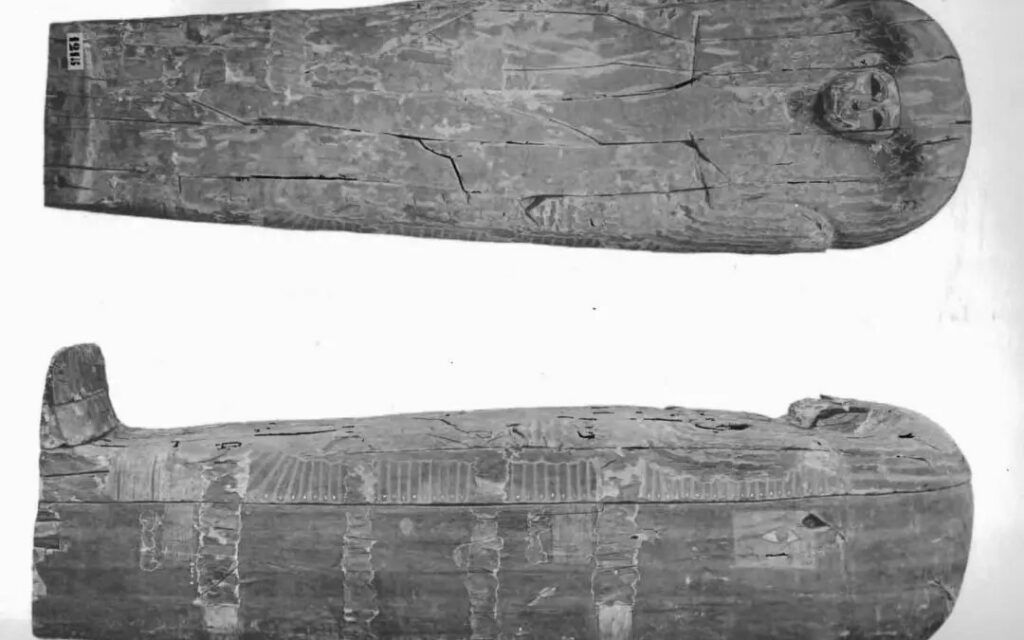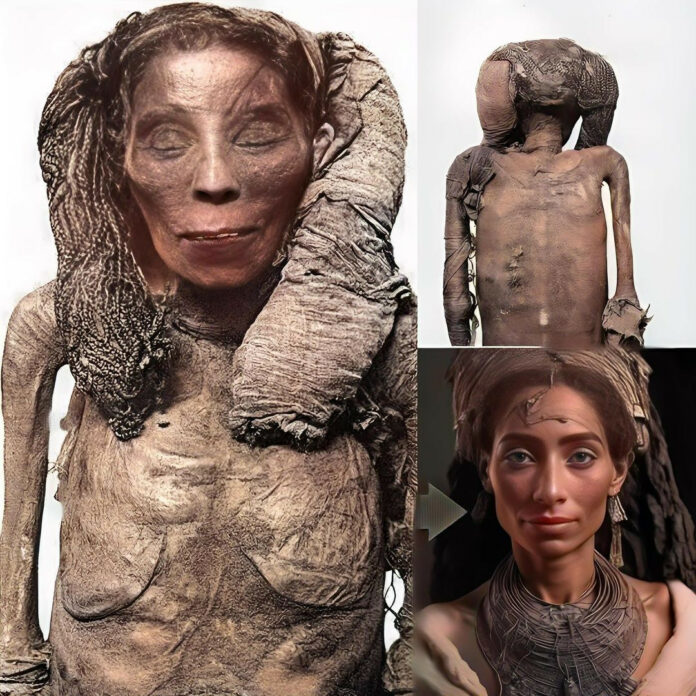A Royal Nursemaid’s Journey Through Time

In 1881, archaeologists unearthed a treasure trove of history in Deir el-Bahari, near Luxor. Among their discoveries was the mummy of Lady Rai, a royal nursemaid who served Queen Ahmose-Nefertari during the early 18th Dynasty, around 1530 BC. Little did they know that this find would become one of the most significant in Egyptology, offering unprecedented insights into ancient Egyptian life and burial practices.
The Mummy That Defied Time
A Marvel of Preservation

Lady Rai’s mummy stands out not just for its age but for its exceptional state of preservation. This petite woman, standing at just 4 feet 11 inches, was estimated to be between 30 and 40 years old at the time of her death. The meticulous mummification process used on Lady Rai’s body has kept her remains in remarkable condition for over three and a half millennia.
Secrets Revealed by Modern Technology

In 2009, a CAT scan of Lady Rai’s mummy revealed something extraordinary – evidence of atherosclerosis in her aortic arch, making her the oldest known case of this condition. This discovery has provided valuable insights into the health and lifestyles of ancient Egyptians.
A Glimpse into Ancient Egyptian Life
Burial Practices and Beliefs

Lady Rai’s tomb was filled with a variety of grave goods, including jewelry, pottery, and cosmetic items. These artifacts not only indicate her high status but also provide a window into the daily life and customs of the Egyptian elite. The presence of these items reflects the ancient Egyptian belief in the afterlife and their practice of equipping the deceased with necessities for their journey beyond death.
Advancements in Mummification Techniques

The study of Lady Rai’s mummy has helped refine our understanding of ancient Egyptian mummification techniques. Her body was carefully wrapped in linen bandages, some of which bore her name, aiding in her identification. The preservation of her own hair, styled in tightly plaited braids, offers a rare glimpse into ancient Egyptian hairstyles.
Lady Rai’s Legacy
Today, Lady Rai’s mummy resides in the Egyptian Museum in Cairo, continuing to captivate scholars and visitors alike. Her remarkably preserved remains serve as a tangible link to a distant past, allowing modern audiences to appreciate the sophistication and complexity of ancient Egyptian society. The story of Lady Rai reminds us that even after 3,500 years, the secrets of the past can still come to light, enriching our understanding of human history.

